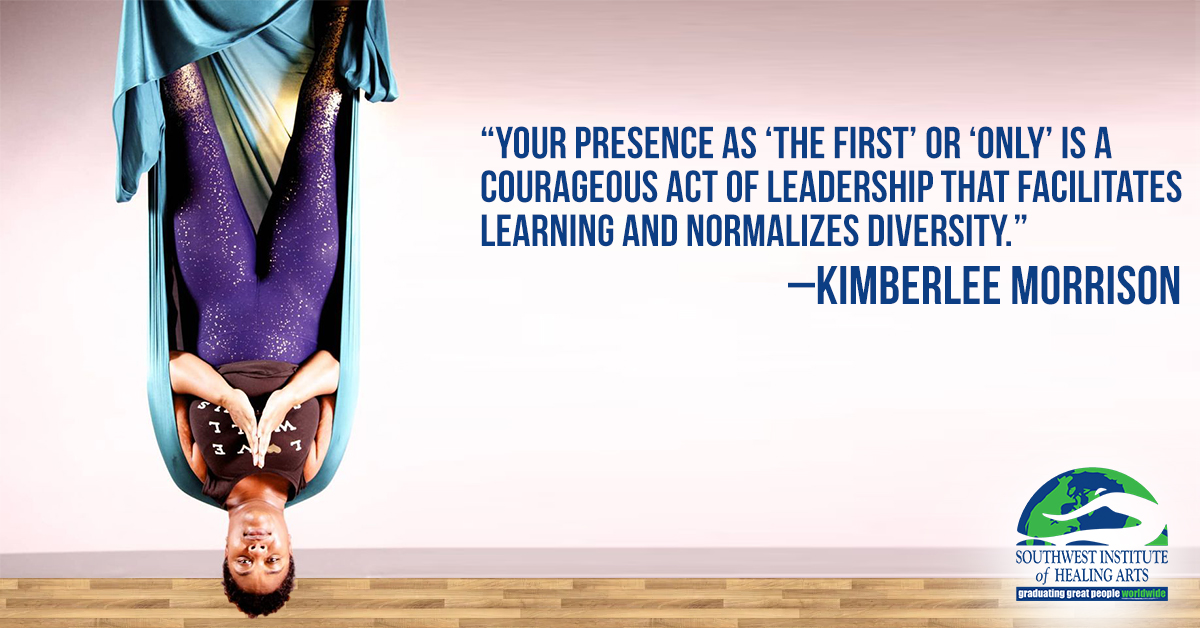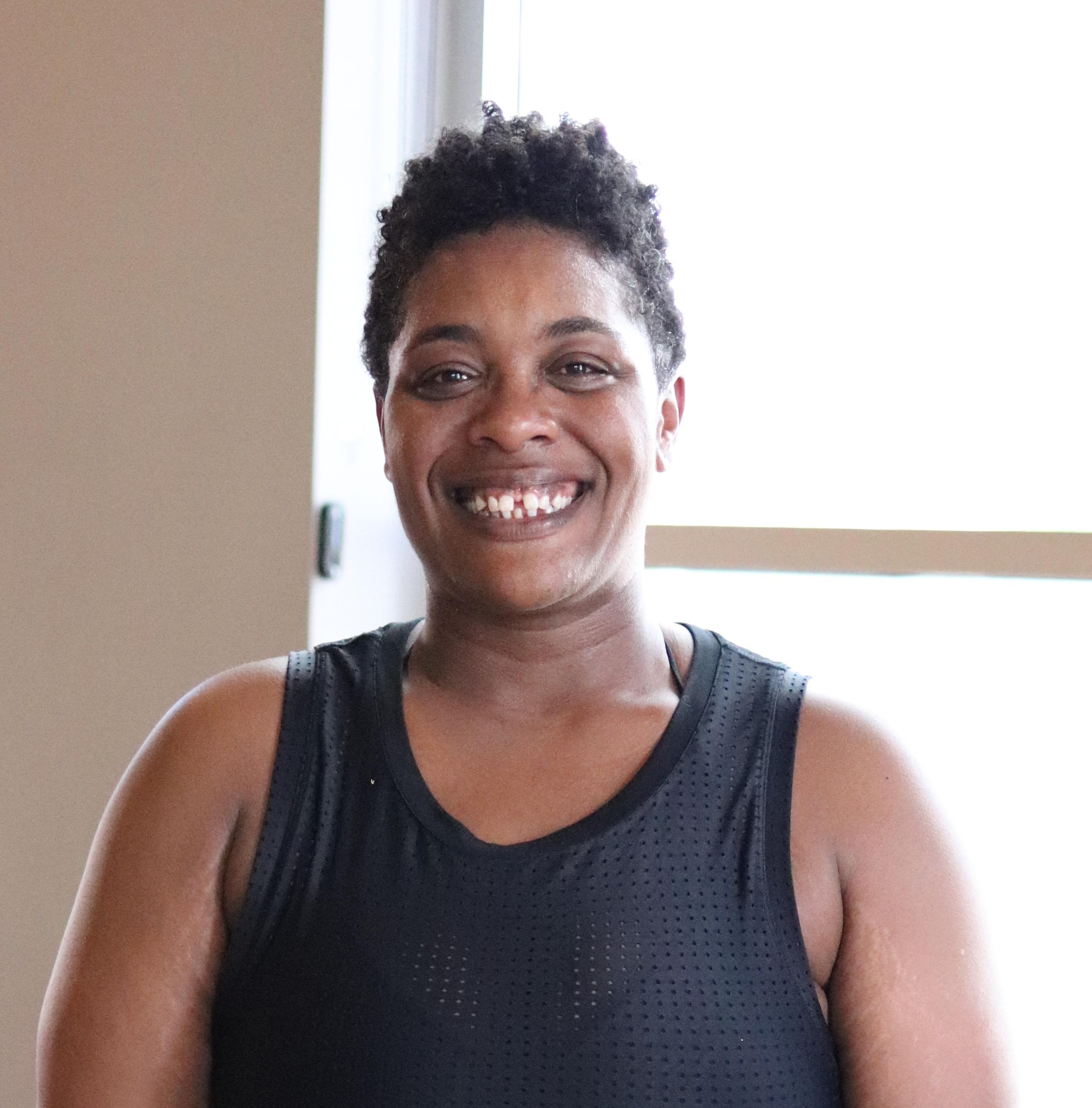
I started my yoga practice at home, when my grandmother gave me Richard Hittleman’s 28-day Exercise Plan. The cover depicted a thin, blonde woman in what looked to me like a contorted shape; an image that has many variations and has become the dominant depiction of what a yogi looks like. I’ve also spent most of my professional, academic and athletic life as one of few (or the only) BIPOC people in the room. So it wasn’t all that surprising that I found myself surrounded by bendy white women in my first studio yoga class. Since this was a normal experience for me — being or perceiving myself as the only BIPOC person surrounded by white people — I didn’t think twice about showing up again.
As I explored different studios, I started to realize that I wasn’t always the only person of color. There were often Asian or racially ambiguous students in the yoga classes I took when I lived in Huntington Beach, California; yet I was usually the only person with darker brown skin, and a bigger body. And I continued to show up. Why? Because I didn’t need to be convinced I had the right to be in the space; no doubt I experienced microaggressions that I either ignored or never processed.
Unfortunately, my story seems more the exception than the rule. I’ve heard many stories from BIPOC folks about being ignored, or feeling unwelcome or unsafe in the predominantly white yoga spaces. There are stories about black and brown yogis who experienced bypassing in their yoga teacher training, or facing the incredulity of students when they realize the person of color in front of them is teaching class. I’ve heard (and shared) stories of South Asian teachers being told their knowledge of their native culture is wrong and having their use of Sanskrit policed by their white peers.
The increasing number of people speaking up about these kinds of experiences means that there is a demand for more inclusive yoga and wellness communities. The demand goes beyond that: People of all ages, gender identities, races, abilities, and nationalities are asking for accessible, welcoming, inclusive and affordable ways to practice yoga, beyond the platitude that yoga is for everyone.
Showing Up and Taking Up Space
We don’t have to ask permission to take up space; and we certainly don’t need to internalize the discomfort of others. Instead, I encourage showing up however you are, and let the practice take its course.
There’s no shortage of research telling us that people who are exposed to more diversity are smarter, more open minded, and experience greater social well-being, so it’s not hard to make a case for cultivating more diverse community spaces. What’s harder is showing up when you feel unwelcome. Sometimes all it takes to feel unwelcome is walking into a space and being the only person who looks like you in the room. However, your presence as “the first” or “only” is a courageous act of leadership that facilitates learning and normalizes diversity.
My experience has been that there is so much freedom in showing up in the fullness of who you are, without judgement or expectation about how others show up, or what they might think of you. Your practice is yours and their practice is theirs. Your brain might scream at you that you are in a threatened space, your practice in that moment is to assess the danger in the room and decide if it is real or imagined. My ability to regard the perception of being “the only” as an imagined threat has enabled me to learn from some truly amazing teachers, and cultivate deep community connection.
I will not pretend that being a pioneer for inclusivity is without its challenges. If you’re the first BIPOC yoga teacher in a predominantly white community, you might feel like a token, or experience some of the aforementioned micro-aggressions — or blatant discrimination. Still, the act of showing up for yourself without concern for how others will react to your presence is an important part of creating more diverse and inclusive spaces. Showing up in this way requires the courage to stand in your own power and not take anything anyone else says or does personally. This is good practice on the mat as well as in the world.
Being “the only” can be very uncomfortable. If you’re not like me — a person of color used to moving through predominantly white spaces — you might consciously or unconsciously be concerned about your psychological safety and yet it’s still important to show up. Here are a few tips for showing up despite the fear and discomfort.
- You Have the Right to Take Up Space: The world would try to convince you that you should limit your expression and shrink to fit its myopic view. Yoga is an invitation to show up as the fullest expression of the divine spark within; public classes are a way to experience this union in community.
- Don’t Take Anything Personally: This gem from The Four Agreements is a reminder that nothing anyone says or does has anything to do with you. How others perceive you is none of your concern, and there’s so much freedom in not letting the perceptions of others dictate your experience.
- Courage = Feeling the Fear and Showing Up Anyway: It can be scary walking into unfamiliar surroundings and feel as though you’re alone in the room. This is an illusion. Just as others are responsible for their perceptions and experiences, you must be responsible for yours. And it’s fine to be a little scared. The definition of courage is feeling the fear and taking action anyway.
No matter your race, body type, economic background, sexual orientation, or gender identity, you have as much right as anyone to show up to a yoga class and experience all of the benefits of the practice. Showing up and perceiving yourself as “the only” doesn’t necessarily signify danger, and you’ll have to decide for yourself whether or not the danger is real or imagined. However, as we move past fear and the perception that we don’t belong, we pave the way for union and community.
Who knows, you might be the reason someone like you feels safe and welcome. The deceptively simple act of showing up and shining bright encourages others to do the same. And one day, you’ll be surprised to find that you aren’t “the only” anymore.


